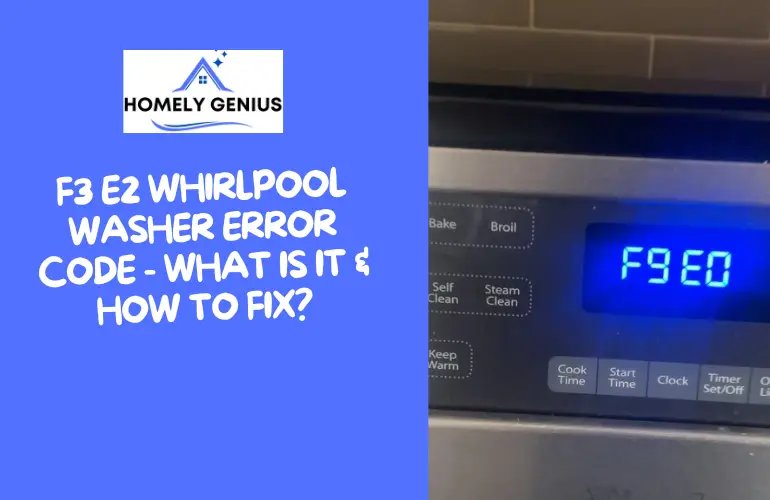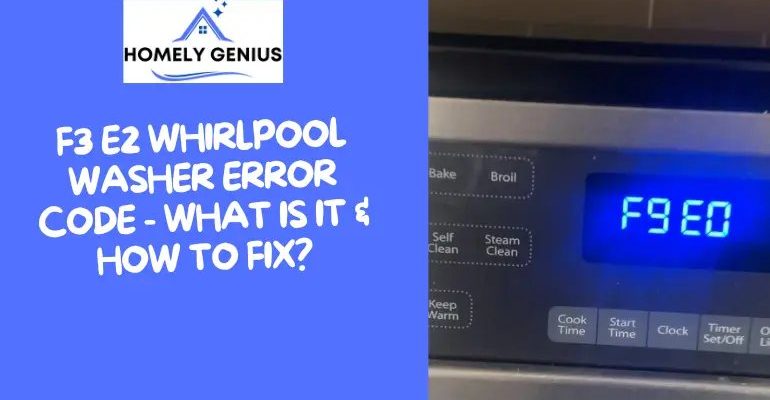
Picture this: You’ve just loaded your washing machine, hit start, and instead of the soothing hum of a wash cycle, you get an error code. This is what’s happening when error code E2 shows up—a signal from your Whirlpool washer that something’s amiss. Understanding this code can help demystify the issue. E2 typically relates to drainage problems. It’s like when the drain in your sink is blocked, and water starts backing up. Similarly, your washer is finding it hard to drain out the water, and it’s letting you know with the E2 code. But here’s the deal: does a reset solve it, or do you need to dig deeper?
Understanding Error Code E2 in Whirlpool Washers
Whirlpool washing machines, like any complex appliance, communicate issues through error codes. When you see E2 flashing on your washer’s display, it’s alerting you to a drainage problem. Just like our earlier analogy about the clogged sink, E2 is essentially saying, “Hey, I can’t seem to get rid of this water. Can you help?”
There are a few reasons your washer might struggle with drainage. First, there could be a blockage in the drainage hose. Imagine trying to sip through a straw that’s pinched; water can’t flow smoothly, right? It’s the same idea here. Another possibility is an issue with the pump filter. If it’s clogged with debris, the washer cannot pump out water effectively. Or, the issue might be with the drain pump itself, which could be malfunctioning due to wear and tear over time.
So, what does this mean for you? Well, while resetting the washing machine might clear temporary software glitches, it won’t magically unclog a hose or fix a faulty pump. But before we jump to conclusions, let’s explore what a reset can do.
The Power of a Simple Reset
You might be wondering, “Can a reset be the magic fix I need?” In the world of electronics, a reset often acts like a restart for your computer. It clears minor faults and reboots systems to their default state. So, if the E2 error was a fluke—a minor hiccup—a reset might just do the trick. It’s like turning your phone off and on again when it acts up.
To reset your Whirlpool washing machine, unplug it from the power outlet. Wait for about a minute or so—imagine giving it a brief power nap. Then, plug it back in. After this, try running a cycle. If the E2 error doesn’t reappear, fantastic! You’ve likely resolved a minor glitch. However, if the error persists, the issue might be more than just a temporary malfunction.
Resetting can sometimes help because electronic devices occasionally get stuck in a loop, much like when a webpage freezes. The reset offers them a fresh start. But remember, it’s not a cure-all for mechanical issues.
When Resetting Isn’t Enough
Okay, so you’ve tried resetting, and yet, the E2 error remains. Now what? It’s time to think like a detective and uncover the root cause. Since E2 points to drainage issues, begin by examining the drain hose at the back of the machine. Ensure it’s not kinked or blocked—imagine a garden hose unable to deliver water because it’s knotted.
Next, move to the pump filter. This is usually located behind a small door or panel at the bottom front of the washer. Carefully remove it, being prepared for some residual water to spill out. Check for lint, coins, or other debris that might be obstructing it. Cleaning the filter can often resolve drainage issues.
If the hose and filter are clear, yet the problem persists, you might be looking at a faulty drain pump. This is akin to a water pump in a car; if it fails, water circulation stops. In such cases, consulting a professional or contacting Whirlpool support might be your best bet.
Preventing Future E2 Errors
Nobody likes dealing with errors, especially when laundry piles up. So, how can we stop E2 from reappearing? Well, it’s all about maintenance—much like regular check-ups keep our cars running smoothly.
Regularly inspect and clean the pump filter. This simple act can prevent debris buildup that often causes drainage issues. Also, keep an eye on the drain hose to ensure it’s always clear and properly positioned. Finally, using the right amount of detergent can reduce residue that clogs up the system.
By taking these preventative steps, you can minimize the chances of running into the E2 error, keeping your washer—and your laundry routine—humming along smoothly. And remember, while resetting can offer a quick fix, understanding your appliance helps keep it running in the long haul.
